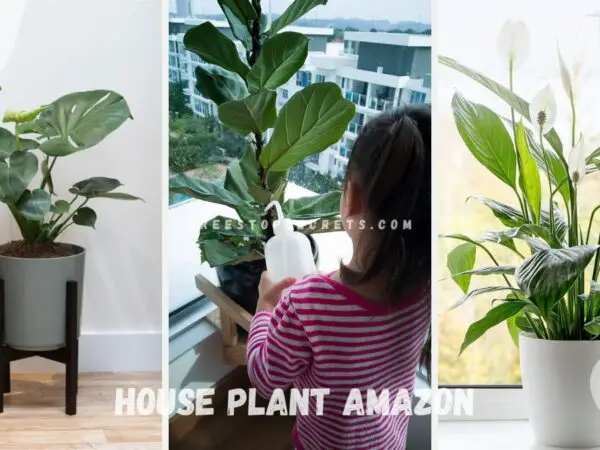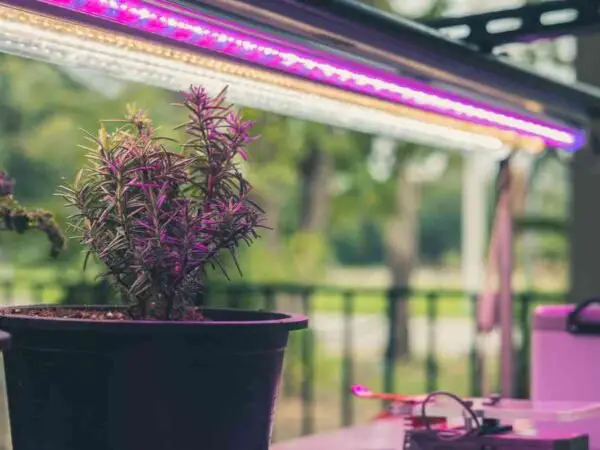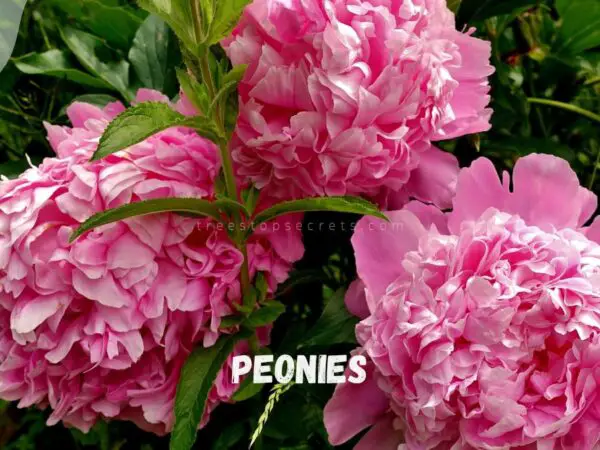Why not grow your own garlic in a pot? A garlic plant pot is an easy way to add garlicky goodness and fresh flavor from hardneck garlics or softneck garlics to your meals with its edible bulb. It’s simple and rewarding. You don’t need a big garden; just a sunny spot on your balcony or kitchen counter will do for growing hydroponic garlic, using garlic leaves from supermarket garlic, and ensuring your garlic well. Growing garlic at home has many perks. It saves you money, and you get the freshest produce possible, including hardneck garlic. Plus, it's fun to watch your plants grow. With the right tips and care, anyone can succeed with this project. Get ready to dig in and learn how to start your garlic garden today!
Benefits of Growing Garlic in Pots
Space Efficiency
Growing garlic in pots makes the most of limited space. Maximizing vertical space is easy with multi-tiered pots. These pots allow you to grow more plants without needing a large area. Small areas like balconies or patios can become productive gardens. Containers fit well into these spaces, making gardening accessible for everyone. Integrating garlic with other herbs or vegetables encourages companion planting. Garlic repels some pests, which benefits neighboring plants. For example, growing garlic alongside tomatoes can help keep aphids away. This method not only saves space but also enhances the health of your garden.
Pest Control
Garlic plants can attract pests if not cared for properly. Implementing natural deterrents like neem oil protects garlic from common pests. Neem oil disrupts the life cycle of insects and keeps them at bay. It is safe for plants and the environment, making it a great choice for pest control. Introducing beneficial insects, such as ladybugs, aids in controlling aphid populations. Ladybugs eat aphids and help maintain a healthy balance in your garden. Regular inspections are essential for early detection of pest infestations. Look for signs like discolored leaves or sticky residue on plants. Acting promptly can save your garlic from serious damage.
Mobility
Mobility is another advantage of growing garlic in pots. Easily relocate pots to optimize sunlight exposure throughout the day. Garlic needs full sun to thrive, so moving pots helps ensure they get enough light. During extreme weather conditions, you can move containers indoors to protect your plants. Using wheeled plant stands makes it simple to shift larger pots around. These stands allow for easy movement without straining your back. Being able to adjust the location of your plants helps them stay healthy and productive.
Choosing the Right Container
Size and Depth
Select containers that are at least 6 inches deep. This depth allows enough space for garlic roots to grow properly. Wider pots also help. They provide sufficient spacing between garlic cloves, which is essential for healthy growth. Consider the growth potential of garlic when picking pot size. Garlic needs room to expand. If the container is too small, it may restrict growth. Aim for a pot that is at least 12 inches wide to give each clove ample space.
Material Options
Various materials can be used for garlic pots. Plastic, wood, and metal are popular choices. Each material has its own benefits. Plastic is lightweight and often less expensive. Wood provides good insulation but may rot over time if not treated. Metal can last long but may heat up quickly in the sun. Evaluate the insulation properties of these materials. Insulation helps maintain soil temperature, which is important for garlic health. Consider aesthetics as well. A beautiful pot can enhance your garden's look and feel. Durability matters too; choose a material that will withstand weather changes.
Drainage Importance
Ensure containers have drainage holes. These holes prevent water from accumulating at the bottom of the pot. Waterlogging can lead to root rot, a common problem for garlic plants. Monitor soil moisture levels closely. Too much water can harm the roots, while too little can stunt growth. Incorporate gravel or stones at the bottom of pots to enhance drainage further. This layer allows excess water to flow away from the roots.
Best Soil for Potted Garlic
Soil Composition
Create a balanced soil mix for your garlic. A good mix includes equal parts of potting soil, compost, and sand. This combination promotes healthy growth by ensuring proper drainage and aeration. Incorporate organic matter into the soil. Organic materials like compost improve soil structure and nutrient availability. They help retain moisture while allowing excess water to drain away. Test the soil’s moisture retention capabilities. Garlic needs well-drained soil but also requires some moisture. Conduct a simple test by watering the soil and checking how quickly it drains. Adjust your mix based on these results.
pH Levels
Test the pH of your soil regularly. Garlic thrives in a pH range of 6.0 to 7.0. Use a soil testing kit available at garden centers or online. If your soil is too acidic, add lime to raise the pH. For alkaline soils, use sulfur to lower it. Making these adjustments ensures that garlic can absorb nutrients effectively. Monitor pH levels consistently throughout the growing season. Fluctuations can affect garlic growth and yield. Regular checks help maintain optimal conditions for your plants.
Adding Organic Matter
Incorporate compost into your soil mix before planting garlic. Compost adds essential nutrients that support plant health. It also improves the overall texture of the soil. Use well-rotted manure as an organic amendment. Manure provides nitrogen, which is vital for garlic growth. Apply it sparingly to avoid over-fertilization. Regularly add organic mulch around your garlic plants. Mulch helps retain moisture in the soil and suppresses weed growth. This practice keeps the roots cool and nourished during hot weather.
Summary
Choosing the right container is just the start. The type of soil you use plays a crucial role in growing healthy garlic plants. A balanced mix, proper pH levels, and regular additions of organic matter will create an ideal environment for your garlic.
Planting Garlic in Containers
Selecting Garlic Varieties
Research different garlic plants for container gardening. Hardneck and softneck garlic offer unique benefits. Hardneck varieties thrive in colder climates. They provide a robust flavor, ideal for cooking. Softneck types are better for warmer areas and have a longer shelf life. Choose disease-resistant varieties to lower pest issues. Options like 'Music' and 'German White' are popular choices. These varieties resist common diseases and pests well. Always check local gardening resources for recommendations.
Preparing Cloves for Planting
Select healthy, firm garlic cloves before planting. Look for cloves that are plump without any signs of damage. Discard any diseased or shriveled cloves to promote strong growth. k the selected cloves in a mild solution for 30 minutes. This step helps reduce the risk of fungal infections. A mixture of water and baking soda works well. Dry the cloves thoroughly before planting them.
Planting Depth and Spacing
Plant garlic cloves 2 to 3 inches deep in the soil. This depth allows roots to establish while protecting them from frost. Ensure that the pointed end of each clove faces upward. Space each clove at least 6 inches apart. Proper spacing allows room for bulbs to grow larger. Mark planting spots with small stakes or chalk to maintain consistent spacing during planting.
Caring for Garlic in Pots
Watering Needs
Water garlic plants consistently. Garlic needs enough moisture to grow well. Check the soil moisture regularly. Stick your finger into the soil about an inch deep. If it feels dry, it's time to water. Avoid overwatering to prevent rot. Too much water can damage the roots. Adjust watering frequency based on seasonal weather changes. In hot months, plants may need more water.
Fertilizing Schedule
Apply a balanced fertilizer when planting potted garlic. This helps provide essential nutrients for initial growth. As the plant grows, apply fertilizer again during active growth. Follow up with additional feedings every 4-6 weeks for optimal results. Look for signs of nutrient deficiency, like yellowing leaves. These signals indicate that garlic needs more food. Adjust fertilization based on plant growth and health.
Mulching Tips
Use organic mulch around your garlic plants. Mulch helps retain soil moisture and regulate temperature. Straw or shredded leaves work well as mulch options. They also suppress weed growth, which competes with garlic for nutrients. Apply a layer of mulch about 2-3 inches thick around the base of the plants. Replenish mulch as it decomposes to maintain its effectiveness. This practice keeps the soil healthy and supports better growth.
Managing Pests and Diseases
Common Pests
Garlic plants can attract several pests. Onion flies are a common threat. They lay eggs near the base of the plant. The larvae then burrow into the bulbs, causing damage. Thrips can also be problematic. These tiny insects feed on the leaves and can stunt growth. Preventing these pests is crucial. Implementing crop rotation helps deter them. Changing planting locations each season disrupts their life cycle. If infestations occur, use insecticidal soap or organic pesticides. These treatments can effectively reduce pest populations without harming beneficial insects.
Disease Prevention
Diseases can threaten garlic health. Soil-borne diseases are particularly concerning. Practicing crop rotation minimizes this risk. Moving garlic to a new spot each year helps keep soil healthy. Proper air circulation is also important. Garlic plants need space between them for good airflow. This reduces humidity, which can lead to fungal diseases like white rot. Regularly inspect your plants for signs of disease. Remove any diseased plants promptly to prevent spread.
Organic Solutions
Using organic solutions is an effective way to manage pests and diseases. Organic pesticides and fungicides are safe for the environment. They help control infestations without harmful chemicals. Companion planting is another great strategy. Certain plants can naturally repel harmful insects. For example, planting marigolds alongside garlic can deter nematodes and aphids. Encouraging biodiversity in your garden promotes a healthy ecosystem. A variety of plants attracts beneficial insects that prey on pests. This natural balance reduces the need for chemical interventions.
Seasonal Care for Potted Garlic
Winter Protection
Garlic needs protection during winter. Insulating pots helps keep the roots warm. Use burlap or frost cloth to wrap the pots. This shields them from freezing temperatures. Moving containers to sheltered spots is also important. Position them away from harsh winds. This reduces stress on the plants and keeps them safe. Applying a thick layer of mulch provides additional benefits. Mulch retains warmth in the soil. It also helps maintain moisture levels, which is crucial for garlic health.
Spring and Summer Care
Monitoring for pests and diseases is essential as garlic grows. Look for signs of trouble, like yellowing leaves or unusual spots. Early detection can save your plants. Water regularly, especially during dry spells. Garlic requires consistent moisture to thrive. Deep watering encourages strong root development. Fertilizing promotes healthy growth in spring and summer. Use a balanced fertilizer that supports both foliage and bulb development. Follow package instructions for best results.
Harvesting Techniques
Harvesting garlic at the right time ensures quality. Wait until the lower leaves start to yellow and dry out. This signals that the bulbs are ready. Use a garden fork when lifting bulbs from the soil. Gently loosen the soil around each bulb to avoid damage. Pulling them out too forcefully can break the bulbs. Curing harvested garlic is a critical step. Place it in a cool, dry place with good air circulation. Curing enhances flavor and extends storage life.
Indoor Garlic Growing
Light Requirements
Garlic plants need plenty of light. Place garlic pots in full sun for at least six hours daily. This exposure helps the plants grow strong and healthy. Rotate the pots periodically. This ensures even light exposure on all sides. If you grow indoor garlic during winter, consider using supplemental lighting. Grow lights can mimic sunlight and support growth when natural light is limited.
Indoor Soil Mix
The right soil mix is crucial for indoor garlic planting. Combine potting soil with perlite and compost. This blend provides good drainage while retaining moisture. Garlic does not thrive in heavy or compacted soil. Avoid using garden soil indoors. It may contain pests and diseases that can harm your plants.
Temperature Control
Temperature plays a key role in growing garlic indoors. Maintain a consistent temperature between 60°F to 75°F. This range supports optimal growth and development. Monitor indoor temperatures regularly. Extreme heat or cold can stress the plants and hinder their growth. If starting from seed garlic, consider using heat mats for germination. These mats provide gentle warmth, encouraging sprouting.
Troubleshooting Common Issues
Yellowing Leaves
Yellowing leaves often indicate a problem with the garlic plant. Check for signs of nutrient deficiency or overwatering. If the leaves are yellow and wilting, adjust your watering practices. Garlic needs well-drained soil. Overwatering can lead to root rot. Consider fertilizing if you suspect a nutrient deficiency. A balanced fertilizer can help restore health. Look for signs like brown tips or spots on leaves as well. These can also indicate issues with nutrients or water levels.
Poor Growth
Poor growth is another common issue with garlic plants. Assess light, water, and nutrient levels if growth appears stunted. Garlic requires full sun for at least six hours daily. Without enough light, growth will slow down significantly. Check for pests or diseases that may be hindering plant health. Aphids and whiteflies can affect garlic plants. Use insecticidal soap to manage pest populations effectively. Evaluate pot size and soil composition to ensure they meet garlic needs. Garlic prefers loose, well-aerated soil that drains well. If the pot is too small, roots may become cramped, limiting growth potential.
Bulb Rot
Bulb rot is a serious issue that can ruin your garlic harvest. Prevent bulb rot by ensuring proper drainage in containers. Use pots with drainage holes to allow excess water to escape. Avoid overwatering and monitor soil moisture levels closely. Garlic thrives in slightly dry conditions. Water only when the top inch of soil feels dry to the touch. Remove any affected bulbs immediately to prevent further spread of rot. Discard any soft or mushy bulbs to protect healthy ones in the pot.
Closing Thoughts
Growing garlic in pots is a rewarding venture. You’ve learned about the benefits, container choices, soil types, and care tips. Managing pests and seasonal changes is key to success. Indoor growing offers flexibility too. With the right approach, you can enjoy fresh garlic right from your balcony or kitchen. Now it’s time to get your hands dirty! Start your garlic-growing journey today. Share your experiences with friends and family. They’ll be inspired to grow their own too. Remember, every pot counts in enhancing your culinary adventures. Happy planting!
Frequently Asked Questions
What are the benefits of growing garlic in pots?
Growing garlic in pots is convenient and space-efficient. It allows for better control over soil quality and drainage. Potted garlic can be moved to optimize sunlight exposure, and it reduces the risk of pests and diseases commonly found in garden beds.
How do I choose the right container for garlic?
Select a pot that is at least 8-10 inches deep with drainage holes. Clay or plastic containers work well. Ensure the pot is large enough to accommodate multiple bulbs if desired, as garlic grows best in groups.
What type of soil is best for potted garlic?
Use well-draining, nutrient-rich soil. A mix of potting soil, compost, and sand works effectively. This combination promotes healthy root development and prevents waterlogging, which can lead to rot.
How should I plant garlic in containers?
Plant garlic cloves pointed side up about 2 inches deep and 4-6 inches apart. Water lightly after planting. Position the container in a sunny spot to encourage growth.
How do I care for garlic in pots?
Water regularly but avoid overwatering. Fertilize with a balanced fertilizer every few weeks during the growing season. Keep an eye on weeds and remove them promptly to reduce competition for nutrients.
What pests and diseases should I manage when growing garlic?
Common pests include aphids and spider mites. Diseases like white rot can occur in damp conditions. Regularly inspect your plants, maintain good air circulation, and use organic pesticides if necessary.
Can I grow garlic indoors?
Yes, you can grow garlic indoors! Use a suitable container with ample light. Ensure proper drainage and maintain consistent moisture levels for successful indoor growth. Indoor garlic may take longer to mature than outdoor varieties.
Image Source: Paid image from CANVA




